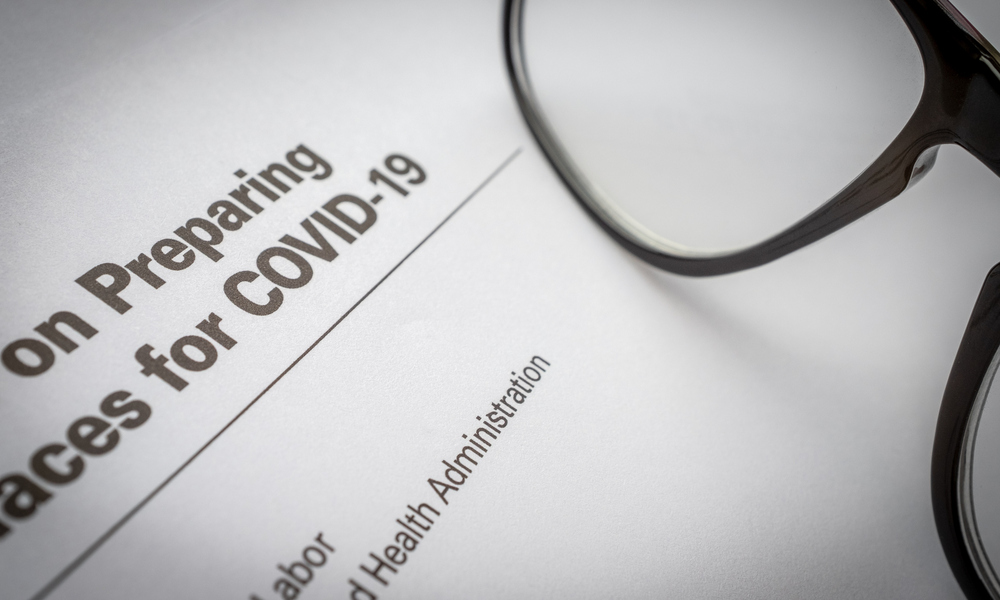
A Return to Meetings: COVID Protocol Document
As associations start hosting in-person meetings again, they’ll want to develop a COVID protocol document that outlines the steps they’re taking to keep participants safe. Here’s a look at the components you should consider including in your documentation.
When in-person meetings resume post-pandemic, meeting professionals will need to consider several new elements of meeting execution, as well as develop additional documentation, including a COVID protocol document.
For an in-depth look at this, I spoke with Julie Ann Schmidt, CMM, CMP, a certified COVID compliance officer and founder and CEO of global events firm Lithium Logistics Group (who recently shared some details about digital contact tracing and screening and testing at conferences).
“Your protocol document is your standalone document that states everything your association is doing to keep everyone safe,” Schmidt said. “It encompasses several elements—from cleaning, to screening and testing, to transportation, and everything in between.”
While the document will likely be something that your meetings team consistently refers to, Schmidt said it’s also good information for all participants and adds a layer of transparency to your meeting. “If you post it on your website, you’ll likely give people peace of mind by showing them that you’re keeping their safety top of mind,” she said.
Schmidt recommends starting the document with an executive summary before diving into the details. “This basically lays out what this document will cover and why it exists,” she said. “From there, you can break it out into how COVID protocols will be applied to different segments and sections of your event.”
While each event’s protocol document will be unique, here are some sections that Schmidt recommends:
Cleaning procedures. “This would include what the conference venue and hotels are doing, as well as how vendors—like your audiovisual and tradeshow services companies—are handling cleaning and disinfection,” she said.
In addition, it’s important to decide before the event who is responsible for what cleaning. For example, Schmidt said, if you’re hosting an expo and you have a contractor who has brought in counters and chairs, “is it their responsibility to clean them, or does the exhibitor or your association have to do it?”
Screening, test, and contact tracing. “This section should lay out in detail how you will do screening and testing for your meeting,” Schmidt said. “For example, does everyone get their temperature taken daily, or does everyone have to have a negative COVID test within three days of arrival onsite?”
She recommends including a grid that shows screening and testing protocols for different groups—staff, volunteers, contractors, exhibitors, and attendees. “For example, one line could be a signed code of conduct, and you would put a checkmark under each audience it applies too. Other items could include a daily screening questionnaire or temperature check,” Schmidt said. “It’s an easy way to lay out who has to go through what.”
This section should also address what your screening thresholds are. “At what temperature do you kick people out or not let them enter the venue?” she said. Additionally, you need to lay out what you are going to do if people get sick onsite or after they get home, which rolls back into your contact-tracing process.
Onsite personal protective equipment. “This covers what you are bringing and what you are requiring,” Schmidt said. “For example, do people need to wear masks at all times? Will you be providing everyone with two masks upon check-in?”
Floor plans. “Show where all your signage is that speaks to COVID, how you’ll have tradeshow floor traffic work to maintain social distancing, and all the opportunities that there are within the building to find hand sanitizer,” Schmidt said.
Transportation. “If you have buses shuttling people between hotels and the convention center or to venues for evening events, make it clear what you’re doing to keep them safe,” Schmidt said. Examples may include keeping buses at 50 percent capacity or putting stickers on seats where people cannot sit.
Contacts. “You want people to know who they should contact for COVID-related stuff,” she said. “You need to have at least one point person on your team who is knowledgeable and can answer questions.” Put their contact information in this document.
Appendix. Schmidt suggests including an appendix with COVID documentation that comes directly from all the hotels, venues, and vendors. “This will outline in more detail what they’re doing in all of the areas the earlier part of the document covered,” she said.
Finally, Schmidt recommends accessing the latest guidance from the Centers for Disease Control and Prevention and adding it to the appendix the night before your event kicks off. “Then you have a timestamped ‘this is what the CDC said the day before my event’ piece of information,” she said. “So if it’s a month later, and there’s a complaint that you didn’t do something you were supposed to do, you can refer to this.”
Ultimately, the goal of the document is to lay out expectations for all participants, especially if they’re used to your meeting being designed and executed in a certain way. “You don’t want people to be surprised or disappointed,” Schmidt said. “You want them to have the experience they expected when they left their house.”
(mrdoomits/iStock/Getty Images Plus)






Comments